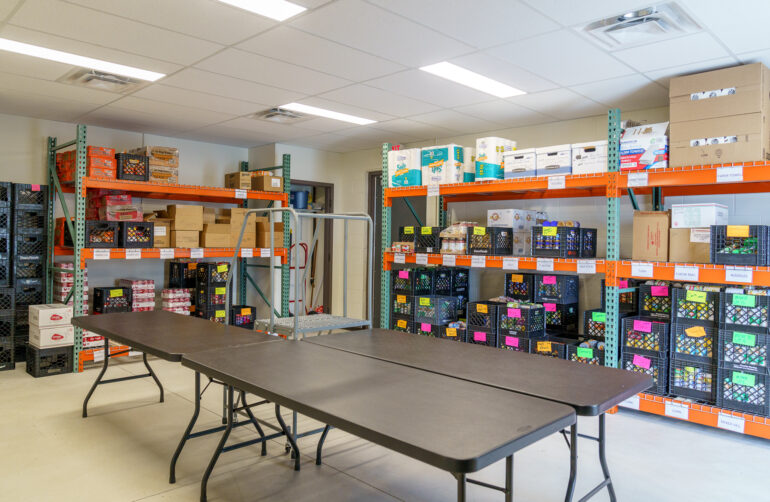Rising food and gas prices are pushing more families to visit food pantries for the first time, even as inflation and a decline in food donations test those same pantries and their suppliers.
The Akron-Canton Regional Foodbank said the number of people visiting food pantries in its eight-county area has increased compared with last year, and 19% of those people have never used a food pantry before.
“So it’s clear that inflation is directly impacting local families and their ability to put food on their dinner tables,” food bank spokesperson Raven Gayheart said. “We know that inflation costs families anywhere between 10% and 13% more than last year to buy groceries.”
The overall cost of groceries is up 13.5% year-over-year, according to the Bureau of Labor Statistics’ August Consumer Price Index. That is the largest increase since March 1979.
“In January, I could buy a dozen eggs for 99 cents. In June, they were $4,” said Mike Shydlowski, a member of the Knights of Columbus Council 14186 based at Our Lady of Perpetual Help Catholic Church in Aurora.
Even in a city as affluent as Aurora, more people are frequenting the Volunteers of America Thrift Store and Food Pantry, Shydlowski said. He and some other Knights go grocery shopping every Monday morning and deliver food in pickup trucks to the pantry.
“Butter that I used to buy — two pounds for $4.98 — is now $7.48. Butter is about 75% more expensive than it was six months ago. Eggs have more than doubled in price. A lot of things have gone up 50% or more. I’m buying the same amount of groceries, but it’s costing more,” he said.
The Knights buy the food with money they raise selling kettle corn from a cast-iron kettle in the parking lot of the church. Oct. 12 and Oct. 26 will be the last sales days until after winter. They’re open from 2-7 p.m.
Shydlowski has purchased more than $25,000 worth of food and supplies for the Aurora food pantry. Of that $25,000, $21,000 of it has come from kettle corn sales, and $4,000 has come from donations from the Aurora VFW Post 2629.
There are 56 food programs in Portage County that are part of the Akron-Canton Regional Foodbank network. Twenty-four of them are food pantries, but there are also 10 hot-meal sites, six programs specifically for senior citizens, seven that are specifically for children and nine additional non-emergency programs. Two of the largest partners in Portage County for the food bank are the Salvation Army organizations in Ravenna and Windham.
It has become more expensive to keep all these food programs stocked.
“Our local food donations are down about 53% this year compared to last year,” Gayheart said. “Some other food streams have helped supplement this deficit, but overall the amount of food that we’ve been able to source is down by 19%.”
Part of the reason is that grocery stores, which are a large source of donated food, are no longer ordering a surplus from wholesalers, and manufacturers aren’t releasing new test brands.
As a result, the food bank has purchased 11% of the food it has distributed so far this year. Last year, they only bought 5% of their food, Gayheart said.
“What’s even more problematic about that is, because of inflation, that food is more expensive for us to purchase,” she said. “So we’re paying about 40% more to purchase food to help fill the gap.
“And then, on top of all of that, you have the fuel costs. We have seven semis that go out Monday through Friday to pick up food donations from retail partners across our eight-county service area. We average well over 200,000 miles in a year by our fleet to pick up and distribute food. Fuel costs for our own trucking fleet are up 56% compared to 2021. So when people are talking about gas prices, we’re feeling the same impact here at the food bank.”
Half of the food bank’s contributions come from individual donors, whom she called the “lifeblood of what we do here.”
As pandemic-era government welfare programs expire and interest-rate hikes drive up unemployment, more Portage County residents will turn to local social service agencies for support.
“I think a lot of families feel they have to make a tough choice between putting food on the table, getting their medication, filling up their gas tank so they can go to work or keeping their heat or their lights on,” Gayheart said. “The food bank is here so people don’t have to make those choices.”

